Kong: Skull Island: A Roaring Spectacle of Primal Power
At its core, Kong: Skull Island delivers a magnificent, visually arresting fantasy action film, built upon a refreshingly straightforward premise: King Kong, the undisputed monarch of his primordial island domain, defends his territory against unwelcome intruders – a contingent of American soldiers and an array of other terrifying, colossal creatures that inhabit its depths.
The year is 1973, setting the stage just as the tumultuous Vietnam War concludes and the shadows of the Cold War still loom large. An American satellite reconnaissance mission unveils a startling discovery: an uncharted tropical island shrouded in mystery within the vast expanse of the Pacific Ocean. Driven by a desire to explore this enigma before it could fall into the hands of communist adversaries, the U.S. government swiftly dispatches a specialized scientific expedition. This eclectic group is joined by a seasoned British jungle survival expert, James Conrad (portrayed by a charismatic Tom Hiddleston), and an intrepid photojournalist, Mason Weaver (played by Brie Larson), alongside experienced military personnel.
Upon their perilous arrival, the expedition is thrust into a world beyond their wildest imaginings. They quickly discover that this verdant land, seemingly untouched by modern civilization, is a living relic, teeming with colossal, prehistoric creatures. Dominating this ecosystem is a gargantuan gorilla, a titan the size of a skyscraper, whose very presence commands awe and terror. This monstrous guardian, Kong, swiftly asserts his dominion, dismantling the military helicopters and their crews with terrifying ease. Stranded and vulnerable, the few survivors are left to navigate the primal dangers of Skull Island, desperately awaiting a rescue that may never come.
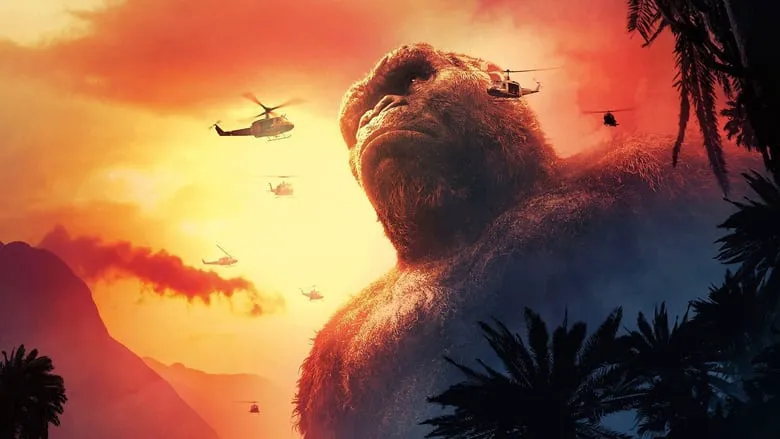
In the current landscape of Hollywood’s interconnected blockbusters, every major studio strives to forge its own shared cinematic universe. Disney reigns supreme with its “Avengers” and “Star Wars” sagas, while Warner Bros. holds its ground with the “Justice League.” Universal, not to be outdone, is meticulously building its “Universal Monsters” lineage. Legendary Pictures, a formidable player in this epic game, ventures into the arena with its own pantheon of fantastical heroes, heroes whose sheer scale easily dwarfs those of their rivals combined.
Legendary ignited their colossal saga in 2014 with the brooding powerhouse that was Godzilla. Now, they proudly present a new chapter in the King Kong legacy, Kong: Skull Island. This installment sees agents from Project Monarch, the very organization tasked with studying Godzilla in Gareth Edwards’s film, setting foot on the fabled Skull Island. The studio has publicly stated its grand vision: to orchestrate future clashes between these titanic “super-monsters,” promising the potential introduction of even more colossal beasts to the fray. This strategic expansion solidifies Kong: Skull Island’s place as a vital cornerstone within the burgeoning MonsterVerse.
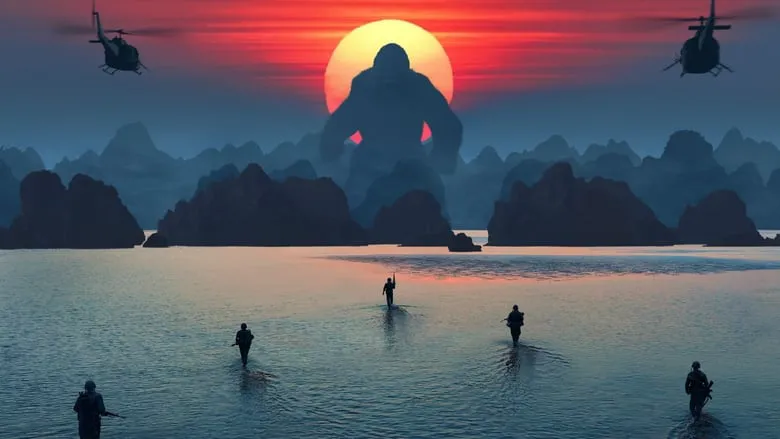
The awe-inspiring movements of the CGI King Kong were brought to life through the masterful performance capture work of Terry Notary, a former circus gymnast and accomplished movement coach. Notary’s expertise, honed through his significant contributions to the “Planet of the Apes” film series, imbued Kong with a unique blend of raw power and surprising agility, making him feel incredibly real despite his digital origins.
Kong: Skull Island marks the eighth big-screen appearance for the iconic monster, whose cinematic journey began with the seminal 1933 classic. However, this iteration diverges significantly from its predecessors. Unlike the original film (and Peter Jackson’s lavish 2005 remake), which famously transported the tropical beast to wreak catastrophic havoc upon the urban sprawl of New York City, Skull Island boldly chooses to ground its narrative entirely within King Kong’s magnificent, perilous natural habitat. The film leverages the exotic beauty of the island’s landscapes as a stunning backdrop for its unfolding drama.
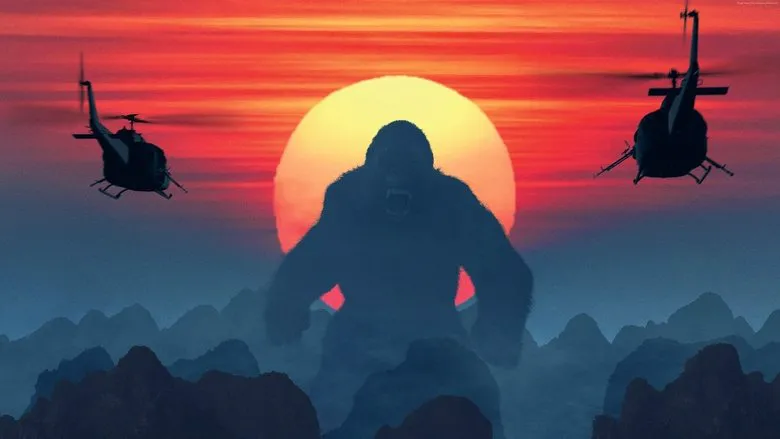
Yet, amidst this breathtaking scenery, there is scarce respite for the characters, or indeed for the audience, to truly soak in the panoramic vistas. Danger lurks around every corner, beneath every root, and within every shadow cast by the towering foliage. While we refrain from divulging the full roster of “otherworldly” creatures that the expedition encounters to preserve the film’s thrilling surprises, it suffices to say that this island is a veritable preserve of giants. Some of these monstrous inhabitants even rival Kong himself in both size and devastating strength, pushing the human survivors to their absolute limits. Caught in a truly dire predicament, only a resolute few among the expansive expedition will endure to witness the end credits.
To ensure a continuous, exhilarating stream of peril and casualties, the screenwriters thoughtfully constructed a sizable expeditionary force. Kong boasts at least ten distinctly characterized main figures, not to mention a multitude of supporting military personnel and unnamed extras, all contributing to the fraught atmosphere of a mission spiraling out of control.
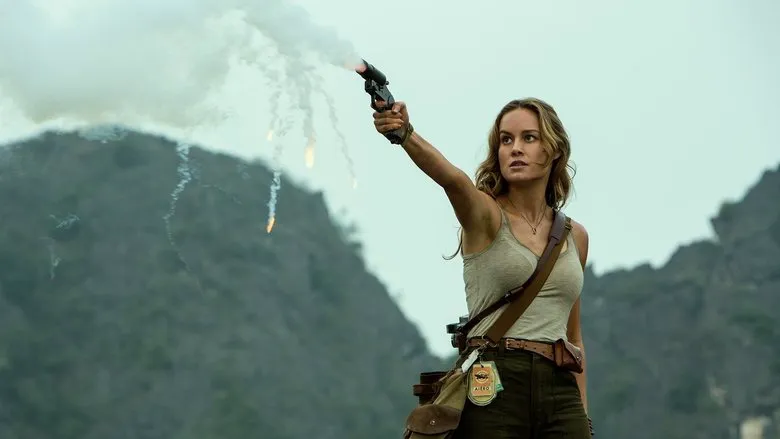
Among the roster of compelling talent, Japanese military pilot Gunpei is brought to life by the popular Japanese rocker, Miyavi, adding a unique international flavor to the cast. Miyavi’s previous foray into dramatic cinema included his memorable appearance in Angelina Jolie’s powerful war drama, Unbroken.
On one hand, the film largely succeeds in distinguishing its principal characters. Their unique backstories and colorful depictions by a seasoned ensemble cast, alongside clearly defined narrative “hooks” for each, help viewers grasp their individual motivations. For example, the battle-hardened military commander, Lieutenant Colonel Packard (a fiercely dedicated and memorable Samuel L. Jackson), devolves into an obsessive quest to destroy Kong following their devastating first encounter. Conversely, the stoic Brit Conrad (Hiddleston) focuses relentlessly on his single-minded objective: safely guiding the dwindling band of survivors to the designated evacuation zone.
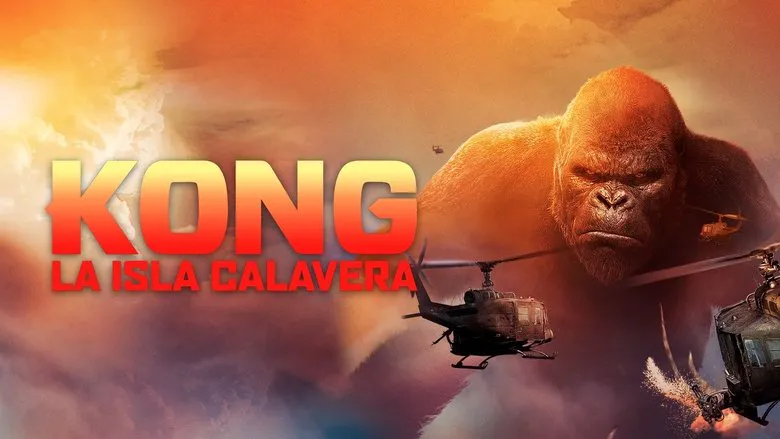
However, the sheer abundance of characters does present a twofold challenge. With so many vying for screen time and audience sympathy, there’s a distinct sense that, after two hours of relentless action, many of them serve primarily as mere “backup dancers” to Kong’s magnificent performance. They struggle to emerge as fully developed individuals whose fates genuinely engage us, limiting our desire to follow their future adventures. In this respect, a significant portion of the Kong cast, while boasting impressive names, sometimes resemble the quintessential “cannon fodder” seen in slasher films—characters who exist predominantly to be systematically dispatched by the primary antagonist. Yet, in fairness, the caliber of talent and the rudimentary character development present in Legendary’s film are a league above what one might expect from a “Friday the 13th” entry.
John C. Reilly Steals the Show
A glorious exception to this pattern is Lieutenant Hank Marlow, brought to vibrant life by the incomparable John C. Reilly. Marlow is discovered as a long-lost World War II pilot, crashed on Skull Island at the tail end of the conflict. After three decades of isolation, surrounded by primordial monsters and coexisting alongside the island’s small, secluded human settlement, he has transformed into an eccentric, bearded sage. He’s a delightfully unhinged figure who explains the brutal, unforgiving rules of survival on the island to the petrified newcomers with a relish that’s both dryly sarcastic and warmly human. Beyond King Kong himself, Hank Marlow is undoubtedly the film’s brightest human attraction—simultaneously uproariously hilarious, profoundly human, and bursting with an infectious zest for life. Reilly meticulously extracts every last drop of potential from his meticulously crafted screen time, and the script, to its credit, brilliantly assists him in doing so, providing him with some of the film’s most memorable lines and moments.
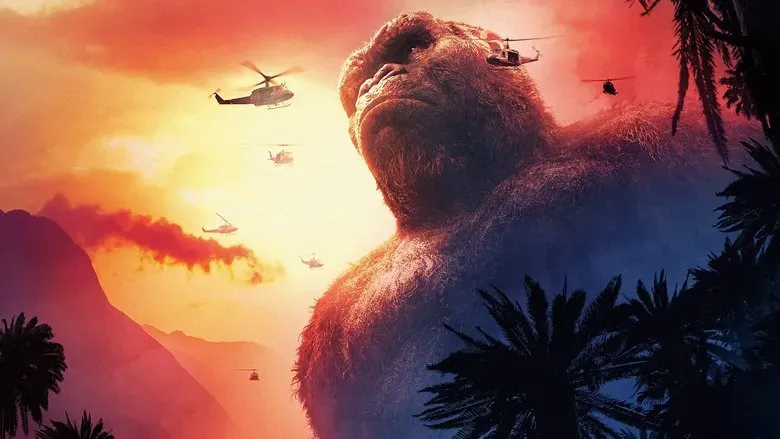
Action-Packed Spectacle and Thematic Echoes
Whereas Peter Jackson’s King Kong leaned heavily into the super-gorilla’s surprising humanity, often featuring overtly sentimental scenes that explored his bond with Ann Darrow, Kong: Skull Island unapologetically prioritizes the raw, unbridled power and fury of its titular character. This film understands precisely what fans of classic monster movies crave, and it delivers in spades. Audiences are treated to an exhilarating exhibition of the giant creature effortlessly tossing military helicopters around like flimsy matchbox toys, bravely fending off ground attacks from relentless soldiers armed with machine guns and flamethrowers, and engaging in titanic clashes with creatures that rival him in size and ferocity—whether in explosive one-on-one duels or against overwhelming packs of adversaries. The sheer scale and impact of the powerful visuals are perfectly augmented by an equally thunderous sound design, making a strong case for viewing the film in the highest quality cinema possible. Those seeking a gentle, benevolent Kong might find themselves disappointed by this more aggressive, wrathful portrayal, but perhaps tenderness is best sought in other genres and cinematic styles.
As one might easily surmise from the potent combination of “helicopters,” “tropics,” and “war” elements, Kong: Skull Island owes a significant artistic debt to Francis Ford Coppola’s seminal Apocalypse Now. Director Jordan Vogt-Roberts, much like Coppola, masterfully portrays the jungle as an utterly frightening, dangerous, and mystically primitive realm, teetering on the edge of psychedelic chaos—a place where American intervention is misguided and futile. Echoing the harrowing descent into madness seen in characters like Lieutenant Colonel Packard and Colonel Kurtz from Apocalypse Now, those who foolishly attempt to conquer this untamed wilderness are driven to insanity, becoming far more savage than the true natives of the land. In spirit, Kong could almost have adopted the title of the Joseph Conrad noveletta that inspired Apocalypse Now—“Heart of Darkness.” However, while it beautifully echoes the aesthetic and mood, Kong consciously sheds the profound philosophical depth of its cinematic forefather. Vogt-Roberts is unequivocally more fascinated by the sheer thrill of bone-crunching action and breathtaking spectacle than by subtle thematic inquiries, delivering a pulse-pounding monster movie that entertains on a grand scale.